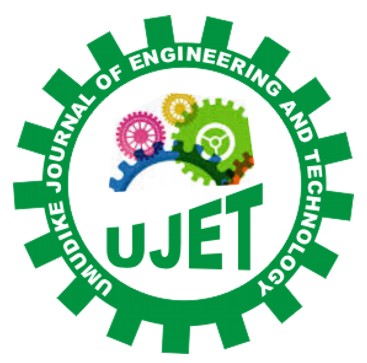|
Alaneme, G. U.
Civil Engineering Department, Michael Okpara University of Agriculture, Umudike, P. M. B. 7267, Umuahia 440109, Abia State, Nigeria
Onyelowe, K. C.
Civil Engineering Department, Michael Okpara University of Agriculture, Umudike, P. M. B. 7267, Umuahia 440109, Abia State, Nigeria
Onyia, M. E.
Department of Civil Engineering, Faculty of Engineering, University of Nigeria, Nsukka, Nigeria
Bui Van, D.
Faculty of Civil Engineering, Hanoi University of Mining and Geology, Hanoi, Vietnam
Mbadike, E. M.
Civil Engineering Department, Michael Okpara University of Agriculture, Umudike, P. M. B. 7267, Umuahia 440109, Abia State, Nigeria
Ezugwu, C. N.
Civil Engineering Department, Alex Ekwueme Federal University Ndufu-Alike, Ikwo, Ebonyi State. Nigeria
Dimonyeka, M. U.
Civil Engineering Department, Michael Okpara University of Agriculture, Umudike, P. M. B. 7267, Umuahia 440109, Abia State, Nigeria
Attah, I. C.
Civil Engineering Department, Akwa Ibom State University, Ikot Akpaden, Nigeria
Ogbonna, C.
Civil Engineering Department, Michael Okpara University of Agriculture, Umudike, P. M. B. 7267, Umuahia 440109, Abia State, Nigeria
Abel, C.
Computer Engineering Department, Michael Okpara University of Agriculture, Umudike, P. M. B. 7267, Umuahia 440109, Abia State, Nigeria
Ikpa, C. C.
Civil Engineering Department, Alex Ekwueme Federal University Ndufu-Alike, Ikwo, Ebonyi State. Nigeria
Udousoro, I. M.
Department of Science Education, Michael Okpara University of Agriculture, Umudike, P. M. B. 7267, Umuahia 440109, Abia State, Nigeria
ABSTRACT
Artificial neural network
(ANN) was adapted in this research study for the modelling of the shrinkage
properties, consistency indices and swelling potentials of expansive clayey
soil stabilized using HARHA as chemical additive. RHA is obtained from the
milling of rice as an agricultural or industrial waste which encourages the
utilization and recycling of solid waste derivatives for engineered
infrastructure to offer greater economic and environmental benefit to the
construction industry. Varying ratios of HARHA was utilized in treatment of the
expansive clayey soil ranging from 0 % to 12 % and the laboratory responses
were obtained which provides expert historical data for the ANN model
development; with the soil-HARHA replacement ratio and corresponding Atterberg
limit responses as the network input variables while the shrinkage, clay
activity and swelling characteristics were utilized as the network output
parameters. The optimized network architecture for the network based on
R-values and MSE performance criteria produced NN 5-9-6 using Levernberg
Marquardt training and feed-forward back propagation algorithm in MATLAB
toolbox. The developed ANN model’s performance was evaluated using loss
function parameter (RMSE) and the computed results is further compared with MLR
model results to produce mean coefficient of determination of 98.27 as against
99.99 obtained from the generated ANN model which signifies a better
performance in terms of estimation accuracy for the prediction of the expansive
clayey soil-HARHA mixture characteristics.
Keywords: Activated Rice Husk Ash; Soil Stabilization; Artificial Neural Networks; Hydrated-Lime; Swelling Properties
https://doi.org/10.33922/j.ujet_v6i1_9
|
View: 444 | Download: 34
Published
Monday, June 01, 2020
Issue
Vol. 6 No. 1, June 2020
Article Section
GENERAL
The contents of the articles are the sole opinion of the author(s) and not of UJET.
|


